Weather, Rainbow, Lightning,
Barnard Objects
Posted: 3 September 2024
Cloudy skies continued as our Monsoon Season weather pattern persisted. Tuesday morning, 27 August 2024, saw this double rainbow while riding my bicycle.
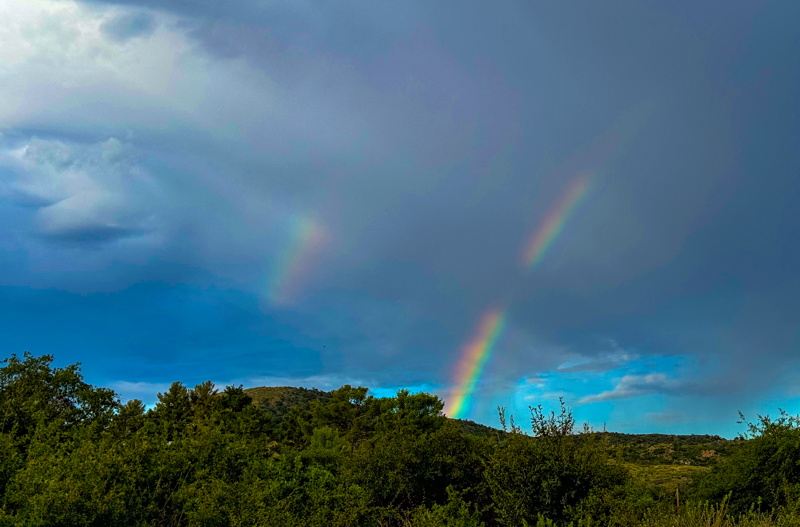
After sunset a thunderstorm with lots of lightning was visible to the north. By the time I got set up to photograph the lightning, the storm was dying. I did get one nice lightning photo (D850 DSLR, f/5.6, 5 seconds, ISO 500, FL 24mm).
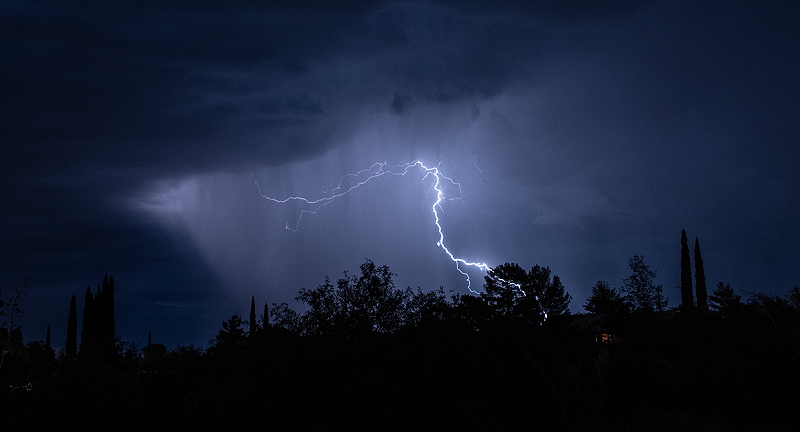
Venus was visible low in the western sky (D850 DSLR, f/2.8, 5 seconds, ISO 500, FL 70mm, cropped).

Friday afternoon, 30 August, a nice little thunderstorm came through with pea-sized hail and heavy rain (0.54" in 20 minutes; storm total 0.82" in 40 minutes).
Click to view 5 seconds video
As a Trained National Weather Service Spotter, I called the rainfall report in to the Tucson office. The Meteorologist said they were watching the little storm on radar and was pleased to get my report.
After sunset on Saturday, 31 August, a storm was west of Oracle. I got one lightning photo (D850 DSLR, f/5.6, 5 seconds, ISO 250, FL 70mm, cropped) before the storm ended.

Monsoon Season finally began taking a break on Monday, 2 September.
|
Open: Monday, 2 September 2024, 1808 MST Temperature: 81°F |
Session: 2002 Conditions: Mostly clear |
Equipment:
12" f/8 LX600 w/StarLock
2" 24mm UWA eyepiece
1.25" 5.5mm eyepiece
Atmospheric Dispersion Corrector
Focal reducer
2" 9mm 100° eyepiece
2" OIII filter
12x50 binoculars
Camera:
D850 DSLR
1817 MST: Dome Cover OFF.
SYNCed observatory clock.
1826 MST: LX600 ON, StarLock OFF, High Precision OFF.
Viewed Venus, 102X and 443X. Nice view of the planet's gibbous phase at 443X using the Atmospheric Dispersion Corrector.
1840 MST: Relaxed on the observatory patio bench.
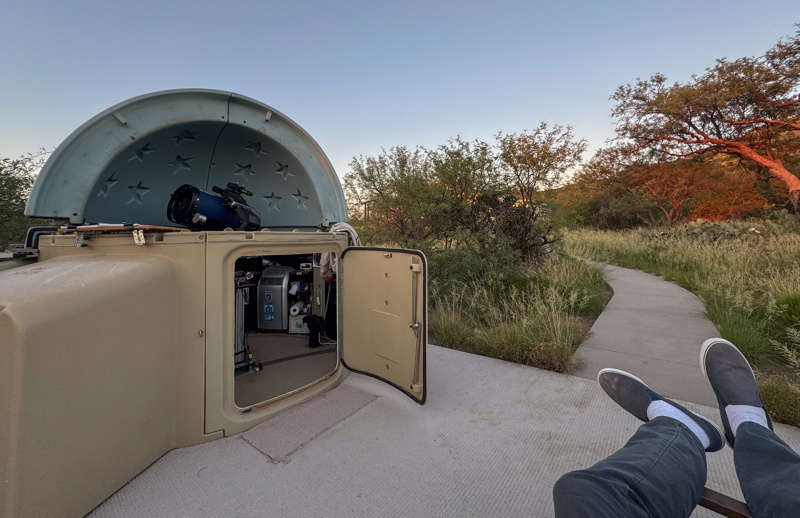
1848 MST: Sunset.
1930 MST: Back in the observatory. Prepared the D850 DSLR for imaging Barnard Objects (dark nebulae) for my Barnard Objects Project.
1937 MST: Dome OFF.
1938 MST: Relaxed on the bench while waiting for the sky to get darker.
1958 MST: Back at the 12" telescope, mounted the D850 DSLR at prime focus + focal reducer, focused and SYNCed on the star Antares, and then locked the telescope primary mirror.
2005 MST: High Precision ON.
Slewed to Barnard Object B46. The wind picked up.
2008 MST: StarLock ON.
Did the following StarLock autoguided images, 2 minutes, ISO 3200.
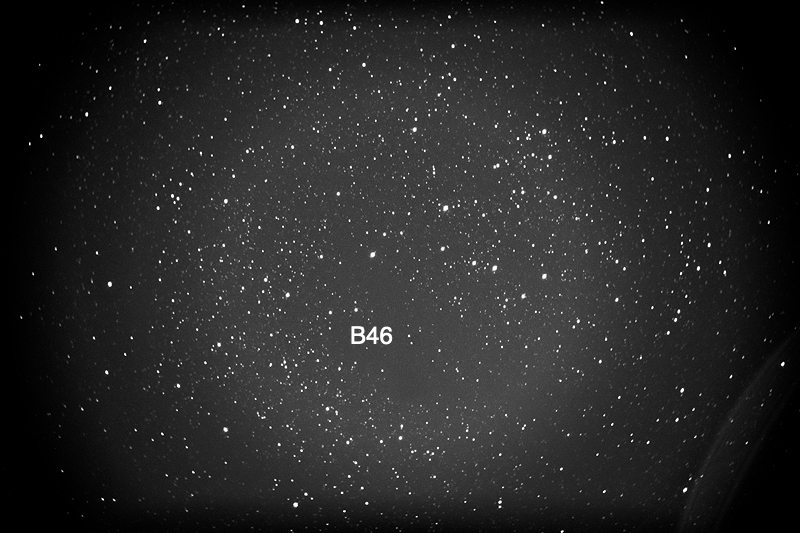
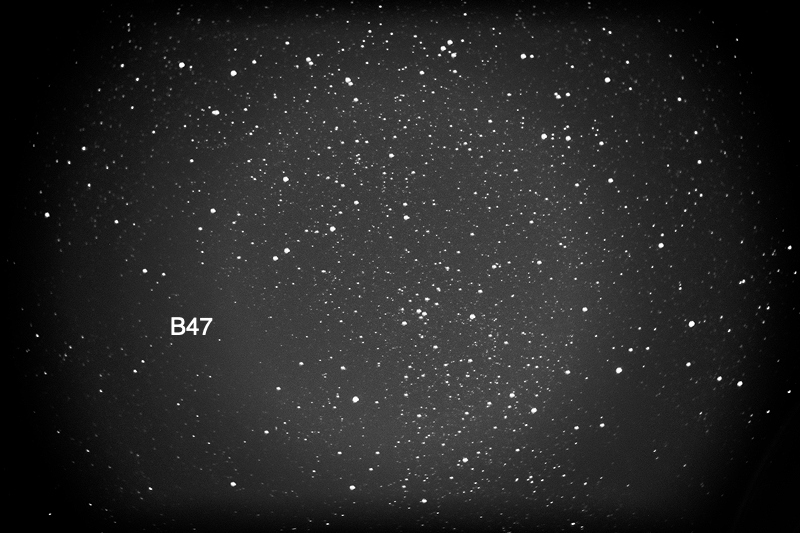
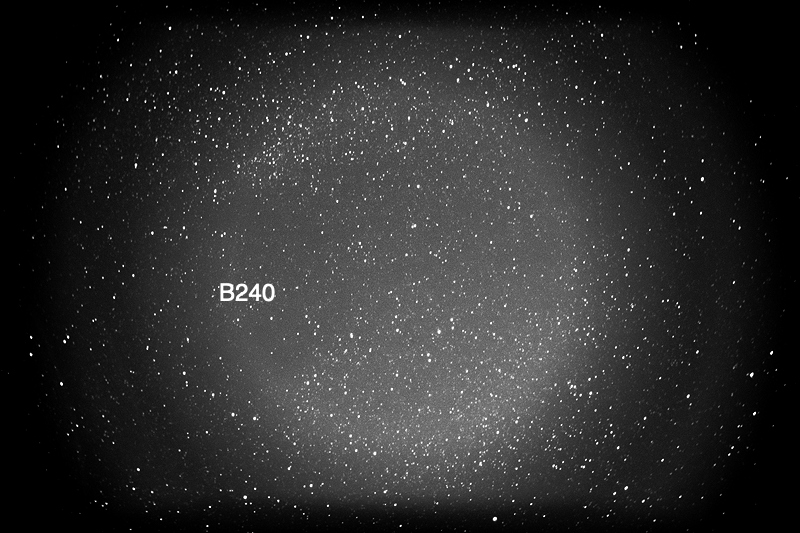
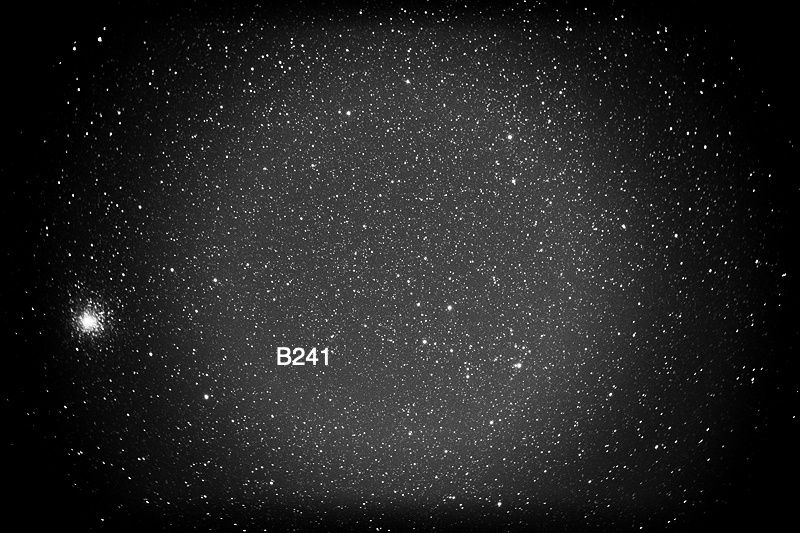
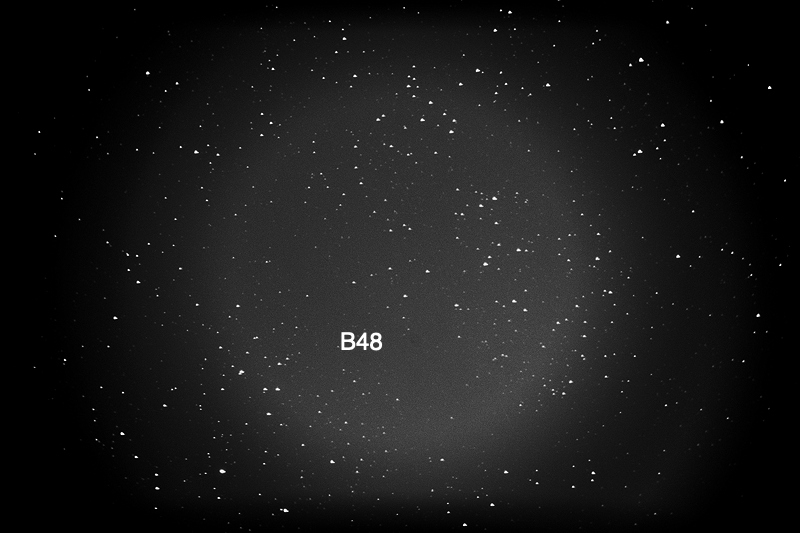
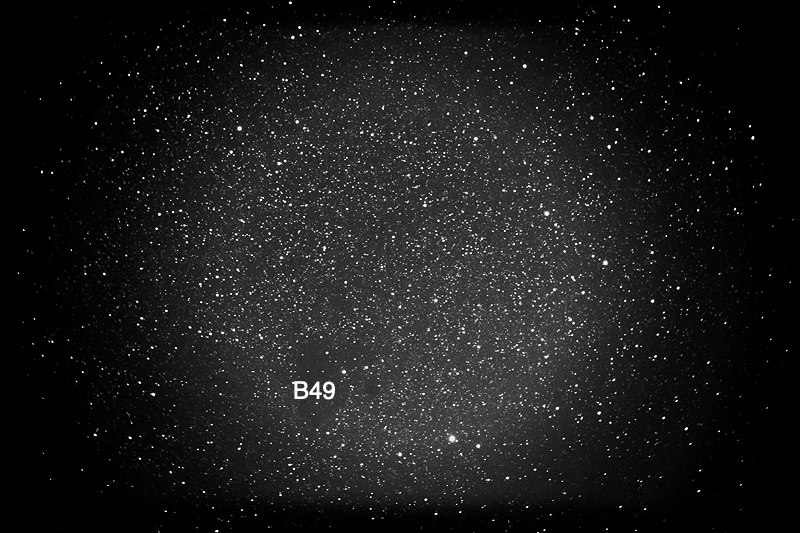
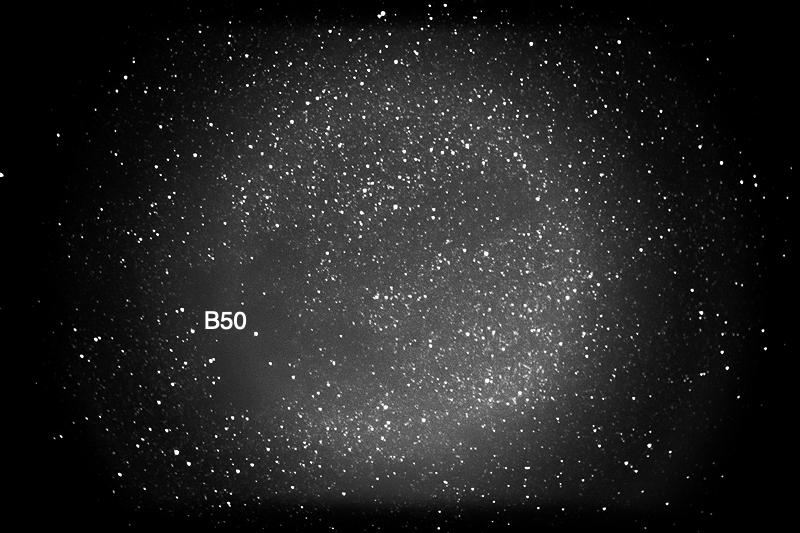
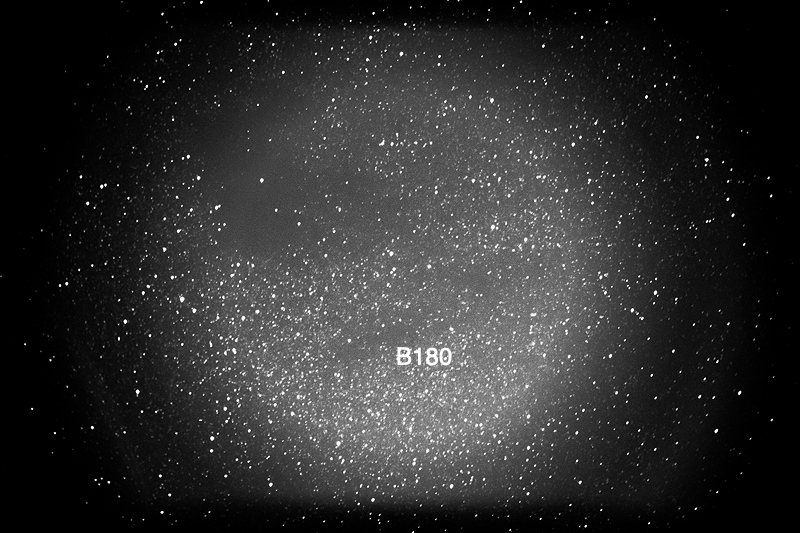
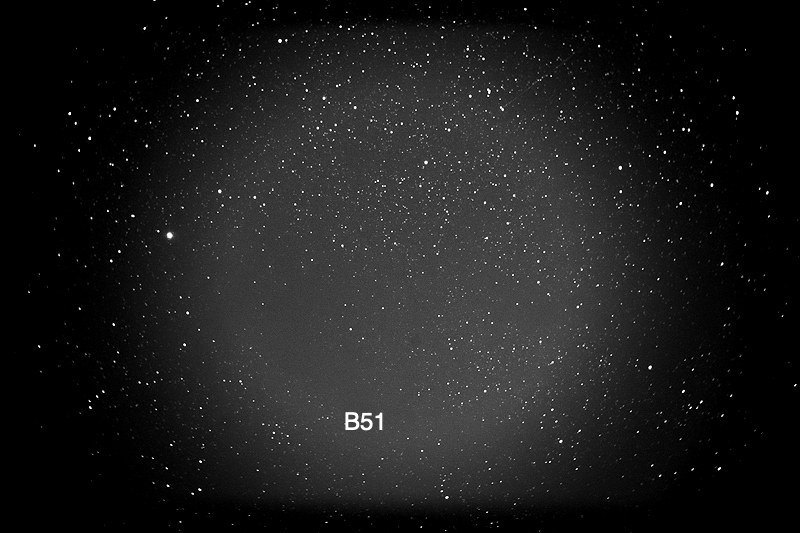
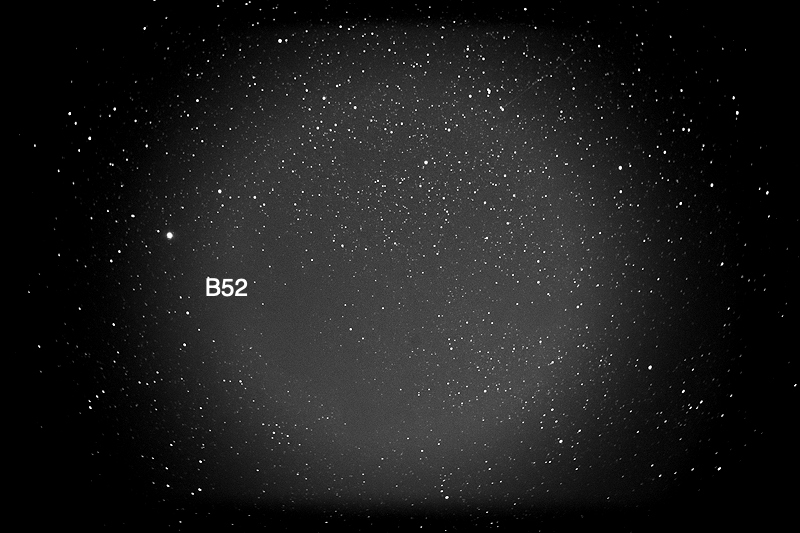
It was nice to be able to finally resume my Barnard Objects Project after nearly two months of cloudy and Moonlit nights.
I slewed to NGC6822 (Barnard's Galaxy). I tried imaging the galaxy but the seeing was too bad with the strong wind blowing. Decided to defer it to another night.
2118 MST: StarLock OFF.
Viewed the double star Albireo, 102X.
I then viewed Campbell's Hydrogen Star, 102X and 271X. I added the OIII filter to the 9mm eyepiece (271X) to try to improve the view, but it did not help. Visually, Campbell's Hydrogen Star was not what I expected to see. Will image it on a future session.
Viewed the planet Saturn, 102X and 271X. The edge-on Ring System looked nice at 271X.
2200 MST: Dome ON.
Viewed M31 (Andromeda Galaxy) and its satellite galaxies M32 and M110, 102X.
2204 MST: LX600 OFF.
Viewed the Andromeda Galaxy, 12x50 binoculars. Nice view.
2223 MST: Took a Sky Quality reading. The sky was surprisingly bright due to lots of particulates in the atmosphere from several days and nights of wind. Reported the result and conditions to Globe at Night.
|
Close: Monday, 2 September 2024, 2228 MST Temperature: 75°F |
Session Length: 4h 20m Conditions: Clear, windy, SQM 20.63 |
Comments are welcome using Email. Please read the Email Etiquette guidance.
Cassiopeia Observatory Home Page
Copyright ©2024 Michael L. Weasner / mweasner@mac.com.
URL = http://www.weasner.com/co/Reports/2024/09/03/index.html
